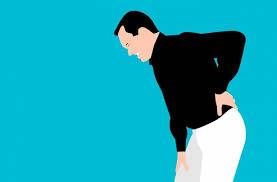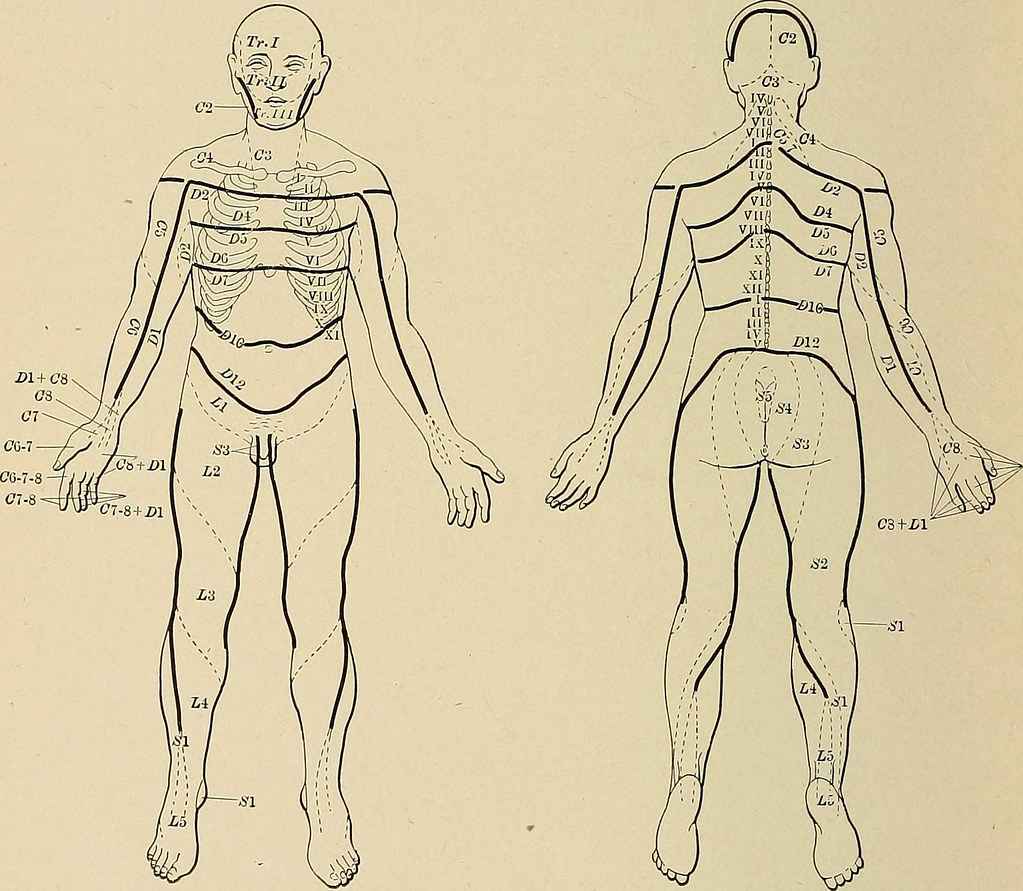A blog article on lumbar radiculitis symptoms, causes and treatment. The article starts off by providing a brief history of the condition and how it can occur. It provides an overview of the signs and symptoms that one should be aware of, as well as a list of treatments available to help with the condition.
Contents
What is Lumbar Radiculitis?

Lumbar radiculitis is an inflammation of the spinal cord. The cause is unknown, but the condition is usually caused by a virus or bacteria. Symptoms include pain and loss of strength in the lower back. Treatment includes antibiotics and pain relief medications. If the condition is severe, surgery may be required to remove the inflamed area of the spine.
Lumbar radiculitis is a rare condition, and it is usually caused by a virus or bacteria. Symptoms include pain and loss of strength in the lower back. Treatment includes antibiotics and pain relief medications. If the condition is severe, surgery may be required to remove the inflamed area of the spine.
Causes
Lumbar radiculitis is a condition that occurs when the lumbar (lower) spinal cord becomes inflamed. The most common cause of lumbar radiculitis is a virus, but it can also be caused by an injury, cancer, or other condition.There is no one single cause of lumbar radiculitis, but it can be caused by a variety of factors including viral infections, autoimmune disorders, and injuries to the spinal cord or nerves.
Lumbar radiculitis often begins with a fever and severe pain in the lower back. The pain can be so intense that it limits how you can move or even stand. Over time, the inflammation may spread to other parts of the body, including the hips and legs.
There is no known cure for lumbar radiculitis, but treatments may include medication to relieve the pain, physical therapy to help improve mobility, and surgery if the condition is severe. In some cases, radiation therapy may also be used to treat the inflammation
Signs And Symptoms of Lumbar Radiculitis
If you are experiencing any of the following symptoms, it is important to seek medical attention:
- Pain in the lower back, especially after standing or lifting something heavy
- Swelling in the area around the spinal cold
- nausea and vomiting
- Lack of energy
- Reduced movement in the affected area
- Aching or pain in the back, especially in the lower back
- A fever
- Weakness or numbness in the arms or legs
If you are experiencing any of these symptoms, it is also important to rule out other causes of your discomfort, such as an injury or a tumor. If you have lumbar radiculitis, you should see your doctor as soon as possible. Depending on the severity of your symptoms, your doctor may prescribe medication to help relieve them, perform tests to determine the cause of the infection and provide treatment recommendations.
Diagnosis of Lumbar Radiculitis
To determine if you have lumbar radiculitis, your doctor may perform a physical exam and several tests, including:
X-rays
CT scans
MRI scans
Ultrasound scans
If you have lumbar radiculitis, treatment typically involves medication and physical therapy. In some cases, surgery may be necessary.
Complications
Complications of lumbar radiculitis can include:
- decreased range of motion in the affected area
- pain, swelling, and stiffness in the neck and shoulder area
- difficulty breathing
- nerve root compression or herniation
- paralysis or loss of function in the arm or hand
- hearing loss
- vision loss
- bowel or bladder problems
Treatment for Lumbar Radiculitis
Lumbar radiculitis is a condition that affects the lower back. It can cause pain and discomfort and may lead to other health problems. Treatment typically includes medication and/or surgery.
There is no cure for lumbar radiculitis, but treatments often include medication and/or surgery. Medications commonly used to treat lumbar radiculitis include antibiotics, steroids, anti-inflammatory drugs (such as ibuprofen), and narcotics. Surgery may be necessary in some cases, such as when the cause of the radiculitis cannot be diagnosed or treated with medications alone.
Some patients may need to rest and avoid physical activity while they are taking medications or undergoing surgery.
Physical therapy
A custom routine developed for your back pain can help build muscle strength, improve movement mechanics and address the issues that are contributing to your pain.
Drug therapy
The physician may recommend several different therapies to relieve pain. Some common therapies are over-the-counter medications including analgesics, anti-inflammatories, painkillers, and muscle relaxants. Prescription drugs are generally used as an adjunct to other procedures or treatments.
Injection-based treatments
Corticosteroid injections, nerve blocks, nerve ablations, and other techniques can be very effective when the location of nerve compression is known, or they may be helpful diagnostically for locating the source of pain.
Some of the things that we can do are:
A good understanding of your pain can help you minimize the impact it has. For instance, you could use a cart to transport groceries instead of carrying them with your hands, which removes one cause of nerve irritation.
Diet changes
When you eat processed foods high in refined sugar and trans-fats, your diet can lead to inflammation which can cause a risk of complications around your spinal cord. Losing weight also places less stress on the spine.
Alternative medicine may be the best solution because it’s natural and preventative.
Alternative Treatment
While alternative treatments such as acupuncture and chiropractic care may not be effective for everyone, they may be part of a successful plan to ease the impact of lumbar radiculopathy. Electrical stimulation of nerve cells and biofeedback are other alternatives that prove useful for some.
Meditation
Pain can have a significant impact on an individual’s mood, sleep, and general outlook. Meditative techniques such as yoga or tai chi can provide relief from these symptoms and may help to create coping strategies for dealing with chronic back pain.
Sometimes, the solution for your lumbar radiculopathy pain may require several approaches. What you need might be something different than what works for someone else.
Conclusion
It may be concluded that If you are experiencing pain or numbness in your lower back, it is important to seek professional medical attention. Lumbar radiculitis (LRD) is a syndrome that can be caused by a variety of factors, including an injury, infection or autoimmune condition. If left untreated, LRD can cause permanent nerve damage and even paralysis. In order to prevent this from happening, make sure to visit your doctor as soon as possible and get started on the proper treatment plan.
Physical Therapy help patients recover from pain. If you’re experiencing Back pain, Shoulder pain, Knee pain, Neck pain, Elbow pain, Hip pain, or Arthritis pain, a physical therapist at MantraCare can help: Book a physiotherapy session.


